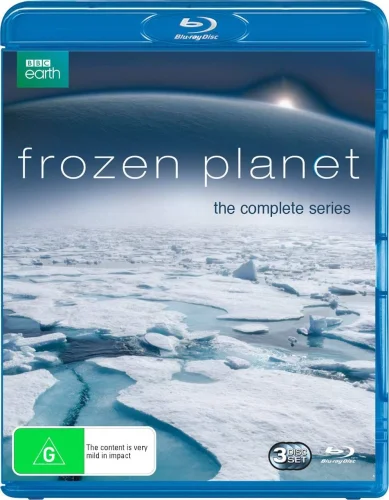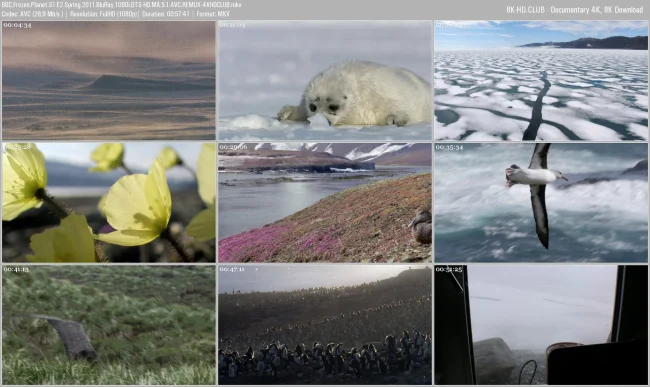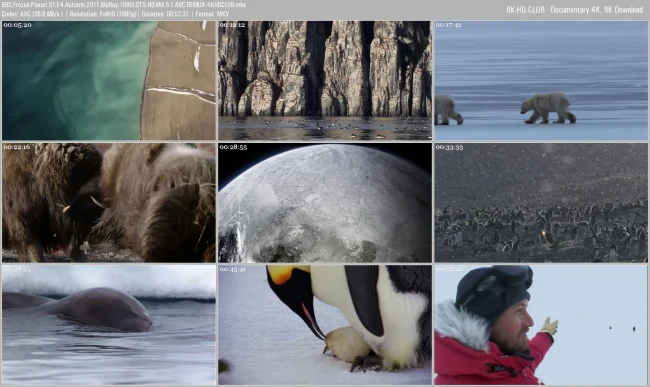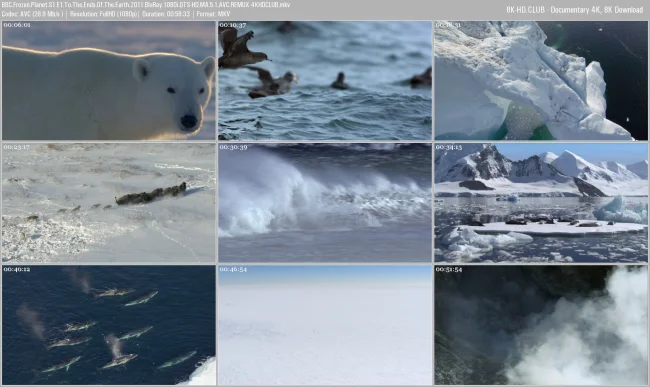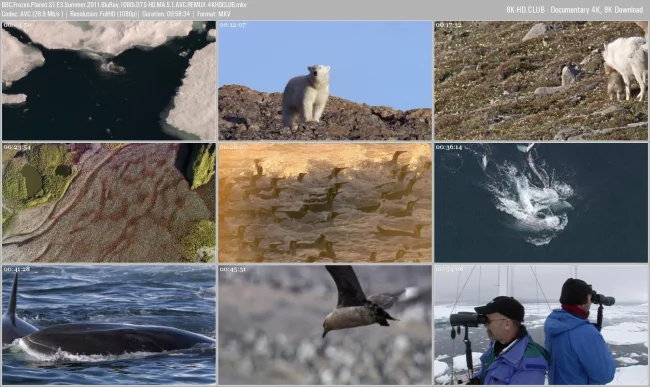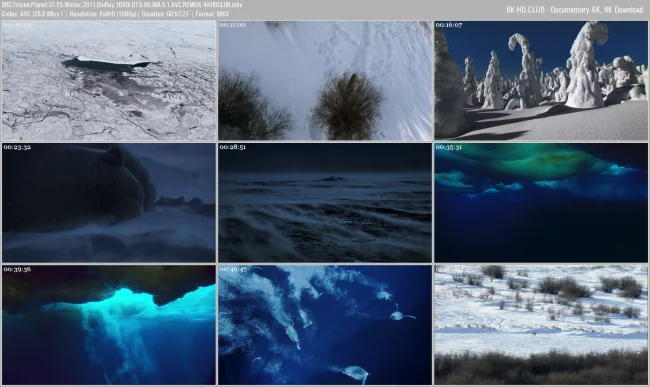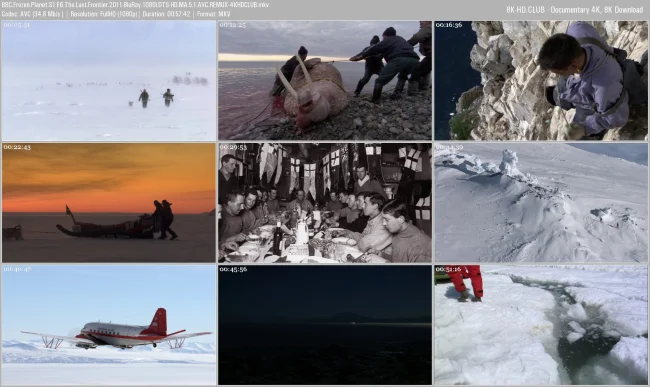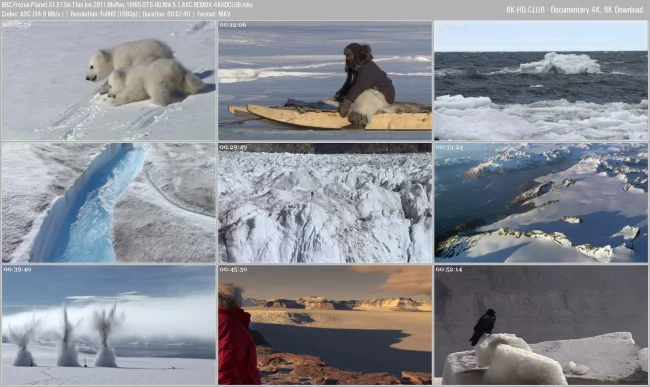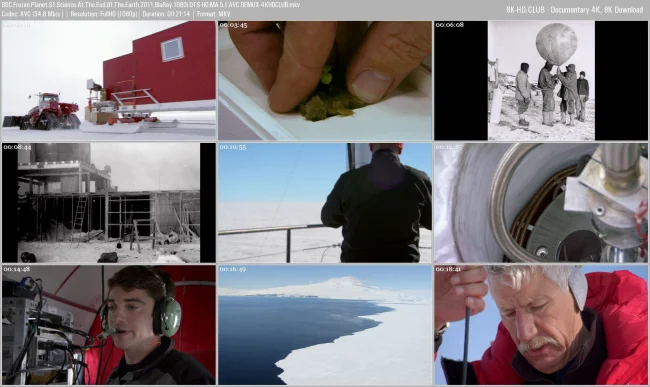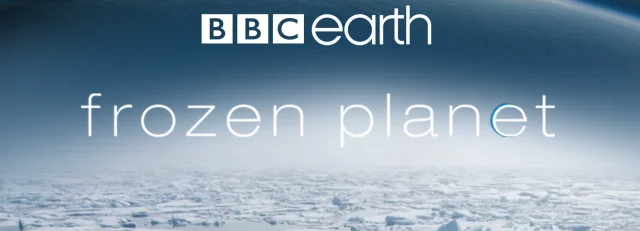
Frozen Planet 2011
Documentary series about the most remote corners of our planet, where extreme conditions seem to exclude the very possibility of life. However, life does not just exist here - it thrives. Adapting and changing, acquiring amazing forms, finding unexpected ways of survival, it again proves the greatness and grandeur of evolution. Stunning footage of killer whales among the ice, seals, penguins, polar birds and majestic icebergs await you. All this is accompanied by an exploration of climate change in these regions.
Season 1
Episode 1: “To the End of the World”
David Attenborough travels from the Arctic to Antarctica to discover amazing icy worlds inhabited by the most incredible animals that have managed to adapt to life on the edge of the Earth.
Series 2: “Spring”
Each spring, rapid ice melt transforms the polar regions and the surrounding seas, where breakaway ice floes rush in. This is a critical period in the lives of many species, sometimes requiring incredible effort. In “gentler” areas, such as South Georgia Island, colonies of animals gather to mate, incubate eggs and raise offspring.
Series 3: “Summer”
In summer, the unset sun causes continuous melting, turning much of the polar regions into fertile land and open water, and vast masses of fresh water rush into the oceans. Many species take advantage of these favorable conditions to reproduce and raise cubs. However, for some, such as polar bears, the disappearance of ice poses serious problems in finding food and traveling.
Series 4: “Autumn”
After months of uninterrupted summer, the polar regions are at their peak of abundance, and even the bears are becoming more sociable. However, the reduction in daylight hours soon changes the situation - frost returns and the ice begins to expand again. Many species go on seasonal migrations, leaving for warmer climes. The exception is the majestic emperor penguins, who arrive to give new life a fresh start, defying the harshest conditions on the planet.
Series 5: “Winter”
The struggle for survival in the polar regions becomes even fiercer in winter - one missed prey can cost a life. Not only physiological adaptations are important here, but also tricks like sheltering in the snow or using the skins of victims. The Antarctic is almost empty except for seals and emperor penguins, and few species remain in the slightly milder Arctic. A miscalculation can lead to the death of entire populations.
Series 6: The Last Frontier
The polar regions are the least hospitable places on Earth, but even here people live. Modern technology makes it possible to exist in Arctic cities, but some communities (often indigenous) retain traditional ways of life that depend on local fauna: reindeer herding, dog sledding, seal hunting and bird egg collecting. Some of these practices are even used by modern patrols in mineral-rich areas such as Greenland. Antarctica, where territorial disputes are frozen, remains closed to exploitation except for ecotourism and scientific research.
Series 7: “On Thin Ice.”
David Attenborough returns to the polar regions to explore the effects of global warming on people and wildlife.
Science at the edge of the Earth
While filming Frozen Planet, the crew gained unprecedented access to the history of the Amundsen-Scott Station, the most extreme and remote scientific base at the South Pole. This movie tells the story of its creation, beginning with the expeditions of the first Antarctic explorers, Scott and Amundsen, who dragged tools and supplies behind them. Today, scientists use high-tech equipment, and we get to know the team working on one of the most complex scientific projects on the planet.
Codec: MPEG-4 AVC (28.90 Mbps)
Resolution: 1080i
#English: DTS-HD Master Audio 5.1
#English: Dolby Digital 2.0
#Russian: DTS-HD Master Audio 5.1
We now have
